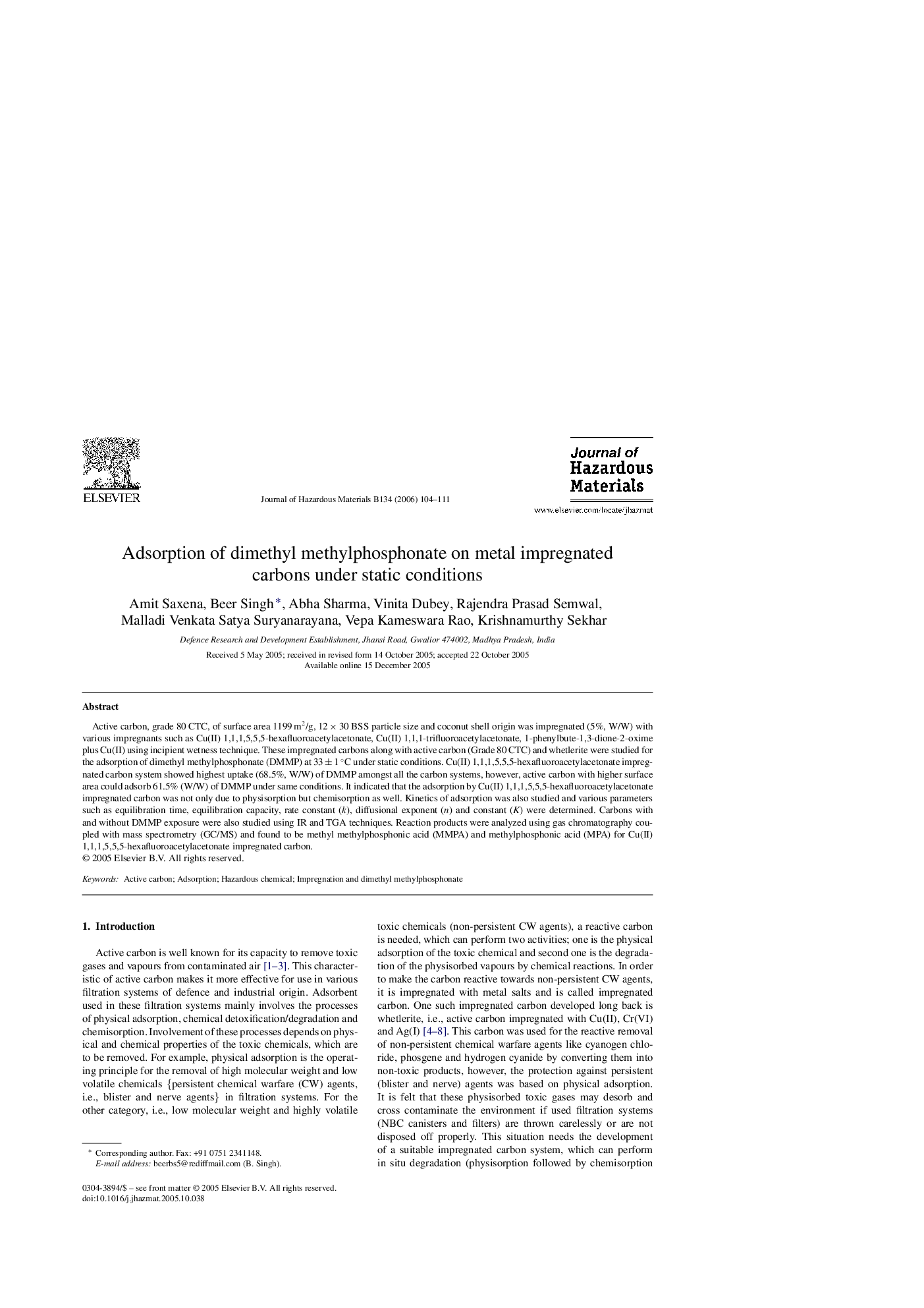| Article ID | Journal | Published Year | Pages | File Type |
|---|---|---|---|---|
| 585253 | Journal of Hazardous Materials | 2006 | 8 Pages |
Abstract
Active carbon, grade 80 CTC, of surface area 1199 m2/g, 12 Ã 30 BSS particle size and coconut shell origin was impregnated (5%, W/W) with various impregnants such as Cu(II) 1,1,1,5,5,5-hexafluoroacetylacetonate, Cu(II) 1,1,1-trifluoroacetylacetonate, 1-phenylbute-1,3-dione-2-oxime plus Cu(II) using incipient wetness technique. These impregnated carbons along with active carbon (Grade 80 CTC) and whetlerite were studied for the adsorption of dimethyl methylphosphonate (DMMP) at 33 ± 1 °C under static conditions. Cu(II) 1,1,1,5,5,5-hexafluoroacetylacetonate impregnated carbon system showed highest uptake (68.5%, W/W) of DMMP amongst all the carbon systems, however, active carbon with higher surface area could adsorb 61.5% (W/W) of DMMP under same conditions. It indicated that the adsorption by Cu(II) 1,1,1,5,5,5-hexafluoroacetylacetonate impregnated carbon was not only due to physisorption but chemisorption as well. Kinetics of adsorption was also studied and various parameters such as equilibration time, equilibration capacity, rate constant (k), diffusional exponent (n) and constant (K) were determined. Carbons with and without DMMP exposure were also studied using IR and TGA techniques. Reaction products were analyzed using gas chromatography coupled with mass spectrometry (GC/MS) and found to be methyl methylphosphonic acid (MMPA) and methylphosphonic acid (MPA) for Cu(II) 1,1,1,5,5,5-hexafluoroacetylacetonate impregnated carbon.
Related Topics
Physical Sciences and Engineering
Chemical Engineering
Chemical Health and Safety
Authors
Amit Saxena, Beer Singh, Abha Sharma, Vinita Dubey, Rajendra Prasad Semwal, Malladi Venkata Satya Suryanarayana, Vepa Kameswara Rao, Krishnamurthy Sekhar,
